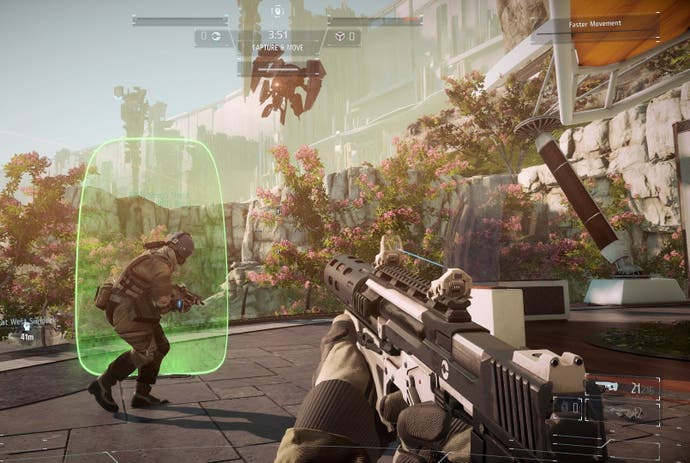Sony is being sued for Killzone failing to deliver "native 1080p" multiplayer
Plaintiff requests Sony pay $5 million for its "deceptive marketing".
Sony is being sued for $5 million in a class action lawsuit filed by someone who was very, very unhappy that Killzone Shadow Fall's multiplayer didn't run in "native 1080p."

As reported by Polygon, the plaintiff, Douglas Ladore, is accusing Sony of "deceptive marketing" with its latest Killzone title, which was allegedly supposed to run its multiplayer modes in a higher resolution.
"Sony claimed that the PS4 was so powerful that its featured Killzone video game could display '1080p' multiplayer graphics, a crowning achievement in the video game industry," the suit claimed. "However, after the game's release, gamers quickly noticed and complained that Killzone's multiplayer graphics were blurry to the point of distraction. The cause of this blurriness went unknown until a well-respected video game website reported that Killzone's multiplayer did not actually provide '1080p' graphics as advertised."
Of course by "well-respected video game site" they mean Eurogamer, of course, whose tech experts at Digital Foundry noted that "Killzone Shadow Fall's multiplayer runs at 960x1080 with a high quality temporal upscale." Our Richard Leadbetter described such as process as using "information from previously rendered frames is used to plug the gaps."
"The fact that few have actually noticed that any upscale at all is in place speaks to its quality, and we can almost certainly assume that this effect is not cheap from a computational perspective," he added. Though he also noted that Shadow Fall still didn't quite hit 60 fps all the time.
Killzone developer Guerrilla Games addressed this matter at the time with the following distinction:
"In both SP and MP, Killzone Shadow Fall outputs a full, unscaled 1080p image at up to 60 fps. Native is often used to indicate images that are not scaled; it is native by that definition.
"In Multiplayer mode, however, we use a technique called 'temporal reprojection,' which combines pixels and motion vectors from multiple lower-resolution frames to reconstruct a full 1080p image. If native means that every part of the pipeline is 1080p then this technique is not native.
"Games often employ different resolutions in different parts of their rendering pipeline. Most games render particles and ambient occlusion at a lower resolution, while some games even do all lighting at a lower resolution. This is generally still called native 1080p. The technique used in Killzone Shadow Fall goes further and reconstructs half of the pixels from past frames."
At any rate, Ladore was still outraged by this. "Sony ensured that the packaging for every retail copy of Killzone represented - among the game's other consumer-facing technical specifications - that Killzone's resolution was an unqualified '1080p,'" the suit claimed.
"After opening Killzone's packaging (thus rendering the game un-returnable) and playing the game, Plaintiff realised that the game's multiplayer graphics were not the '1080p' graphics that Sony advertised. Instead, Plaintiff noticed that Killzone's multiplayer graphics were blurry and did not appear to be rendering at a native 1080p resolution," it added.
"Had Plaintiff known that Killzone's multiplayer mode was not running at a graphics resolution of 1080p, he would have not have purchased Killzone at all, or would have paid substantially less for it."
The suit is being handed by lawfirm Edelson, who previously took action against EA for failing to provide free digital copies of Battlefield 1943 with every purchase of Battlefield 3, as it was advertised, and it handled the class-action lawsuit against Sega and Gearbox for Aliens: Colonial Marines' less than stellar quality.
We've reached out to Sony for comment on this and will update when we hear back.
For the full suit, we've embedded the document (via Kotaku) below:









